- Home RESEARCHResearch Highlights
- Research Focused on Outer Space
Research Focused on Outer Space
- MENU -
Thanks to real-life deployments of private-sector spacecraft in recent years, even people who are not trained astronauts have increasing opportunities to travel to space. Moving forward, space exploration will become something in which the average person can take part. Aoyama Gakuin University's College of Science and Engineering and Graduate School of Science and Engineering are pursuing a wide range of research and education in the aerospace field.
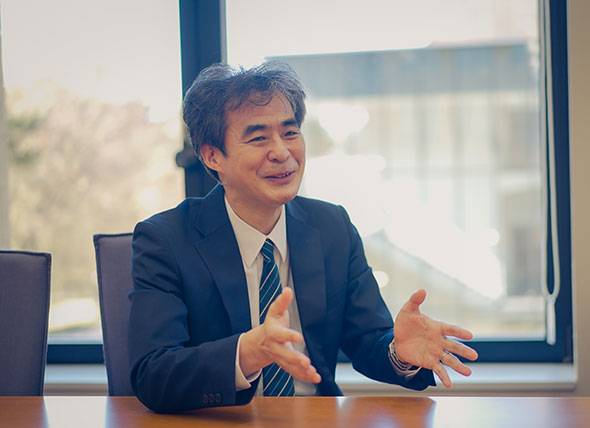
Hideo Cho
Professor in the College of Science and Engineering Department of Mechanical Engineering, Dean of the College of Science and Engineering, Dean of the Graduate School of Science and Engineering
Hideo Cho studied mechanical engineering and completed a doctoral degree in engineering at the Aoyama Gakuin University Graduate School of Science and Engineering. After working as an assistant at the Aoyama Gakuin University College of Science and Engineering Department of Mechanical Engineering, an assistant at the Tohoku University Graduate School of Engineering, and an assistant at Aoyama Gakuin University College of Science and Engineering Department of Mechanical Engineering, in 2007 CHO became an associate professor in the same Department of Mechanical Engineering, and then a professor in 2013. Furthermore, he serves as both the dean of the College of Science and Engineering and dean of the Graduate School of Science and Engineering.

Providing a Wider Range of Research Possibilities for Students through the Cooperative Graduate School Program
Outer space is a popular area in the field of science, and it has inspired dreams among many of our students—their eyes just light right up when you broach the subject. Aoyama Gakuin University's College of Science and Engineering is divided up into seven departments which present students with opportunities to learn in a wide range of academic fields, from mathematics and physics through to management system engineering with social-science foundations. Among these various departments, teachers and students of the Department of Physical Sciences and Department of Mechanical Engineering carry out research in the fields of space, aeronautics and similar.
Space is one our major focus areas in the physical sciences field, and three of our teaching staff from the Department of Physical Sciences pursue space research rooted in theory and observations. In the Department of Mechanical Engineering, on the other hand, faculty and students are focused primarily on building things and developing control methods. Manufacturing serves as a foundation in various types of industry, and when it comes to the aerospace field, mechanical engineering knowledge is necessary to create aircraft and spacecraft. Therefore, Department of Mechanical Engineering faculty involved in research on mechanics, material engineering and similar also involve themselves in aerospace research.
Although "aerospace" is a term we hear often, there are various different ways to approach it as a field. At Aoyama Gakuin University, the Department of Physical Sciences engages in research on spacecraft and aircraft through efforts in fields such as materials and mechanics—in addition to research on space itself from a physics standpoint, of course. In fact, we teach students in ways that are tailored to their personal interests, and thus offer a them wide range of subjects to learn about. This is one of the College of Science and Engineering's greatest strengths.
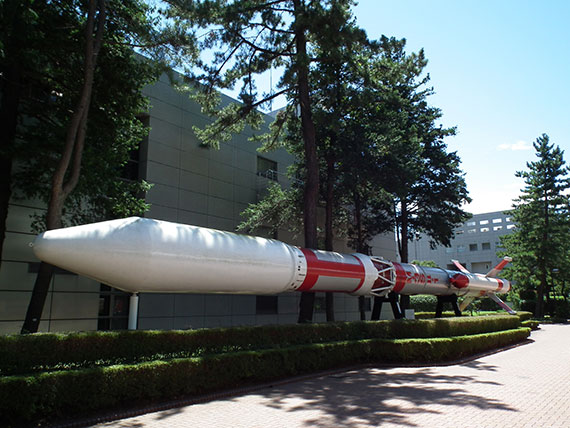
Education Framework in Collaboration with JAXA
Aoyama Gakuin University collaborates in a wide array of different ways with other universities and research institutes. In the field of aerospace, we have signed an agreement with the Japan Aerospace Exploration Agency (JAXA) to create the Cooperative Graduate School Program, which sends students over join in research operations at JAXA. Specifically, the program enables our students to apply for participation in JAXA research laboratories, where JAXA researchers serve as teaching staff and lead research activities. And because students remain enrolled at the University during their time in the program, our professors also provide them with support.
In contrast to departments and colleges at larger-scale national universities, our College of Science and Engineering cannot provide courses for every possible field and topic. However, through the Cooperative Graduate School Program, we can pair students with experts in various fields who serve as instructors, thus enabling a wider range of possibilities for student research activities. Furthermore, students are greatly motivated in their studies and research thanks to the direct instruction provided by JAXA researchers.
The College's Sagamihara Campus and JAXA's Institute of Space and Aeronautical Science (ISAS) are situated very close to each other, which makes it easy for students and JAXA researchers to travel between the two locations. This facilitates greater ease of collaboration and joint research operations between the two.
In the Department of Physical Sciences, we have launched a course for third-year students titled "Leading-edge Physics," through which JAXA researchers and other members from outside organizations, invited as guest lecturers at the University through the Cooperative Graduate School Program, come in to teach classes. Hearing about different types of research from these visitors inspires a lot of students to think more about their graduation thesis research topics and future career possibilities. Here at the University, we want students to select research topics and future paths in this way, based on their own interests and ideals.

Overview of the Cooperative Graduate School Program: New JAXA Student Acceptance Program
◆What is the Cooperative Graduate School Program?
Based on a continual and comprehensive agreement between the JAXA and participating universities, JAXA researchers are assigned to universities in positions such as professor, associate professor or similar. They have equal standing to the university's professors and, based out of JAXA facilities, they provide graduate-student education and serve as leaders for graduate-level research activities for a specified period of time to students accepted into the program. Activities by said JAXA personnel include education and research support (including support for writing of academic papers), and they also serve as teaching faculty assigned to students who are preparing their degree dissertations.
◆ Which students are eligible for participation?
Students enrolled at graduate schools participating in the Cooperative Graduate School Program. (Course auditors, research students and similar are not eligible.)
◆ What types of support do JAXA personnel provide?
Education and research support for graduate-level studies and activities, including support for writing of academic papers.
◆ What is the period of student assignment to JAXA facilities?
The required period for completion of studies and/or research.
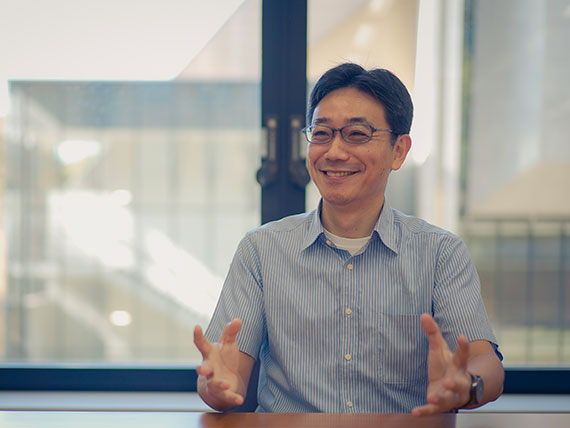
Takanori Sakamoto
Takanori Sakamoto studied fundamental physics and completed a doctoral degree in science at the Tokyo Institute of Technology Graduate School of Science and Engineering. He has worked as a collaborative researcher at the Institute of Physical and Chemical Research (RIKEN) Makishima Cosmic Radiation Laboratory; participated as a fellow and in the NASA Postdoctoral Program; and served as a research associate at the University of Maryland, Baltimore County. In 2012, Sakamoto became an assistant in the Department of Physics and Mathematics at Aoyama Gakuin University's College of Science and Engineering, and in 2019 he advanced to the position of professor.

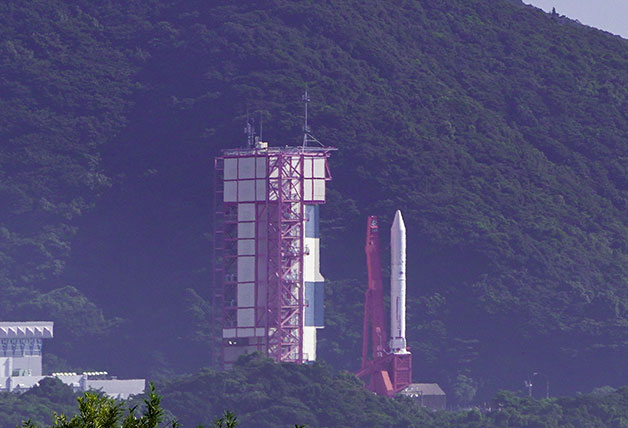
Efforts in the Field of Astrophysics
As an academic field, physics is roughly divided into the two areas of theoretical research and observation- and experiment-focused research, both of which influence the other as the development and progress are made. The Department of Physical Sciences has three research laboratories in the area of astrophysics, where students can choose to pursue either theoretical or observational research activities.
Theoretical research entails construction of one's own theoretical models which are then used to predict astronomical phenomenon and so forth. Observational research, on the other hand, involves the development of new observation equipment, carrying out of actual astronomical observations, and other such activities whose data are used in analyses to narrow down theoretical predictions and build new knowledge.
My specialty is observation of space using short-wave electromagnetic waves such as x-rays and gamma rays. Through the Japan Aerospace Exploration Agency (JAXA) Cooperative Graduate School Program, both my research lab and YOSHIDA Atsumasa's research lab—which carries out similar observational research—send one student each over to Professor YOSHIDA Tetsuya's research lab at JAXA. YOSHIDA Tetsuya is involved in the Joint International South Pole Orbiting Balloon Experiment with the goal of searching antiparticles and antimatter inside cosmic rays in order to identify sources of dark matter, which he believes fills our universe.
I took part in the launch of, and currently participate in operation of, the microsatellite ARICA (AGU Remote Innovative CubeSat Alert System). We came up with the idea for ARICA after hearing JAXA's Professor YOSHIDA talk about his use of private-sector communication equipment in his Japanese Balloon Program. The Cooperative Graduate School Program has not only helped students pursue research in a wider range of fields, but has also enabled us teachers widen our perspectives and come up with new ideas.

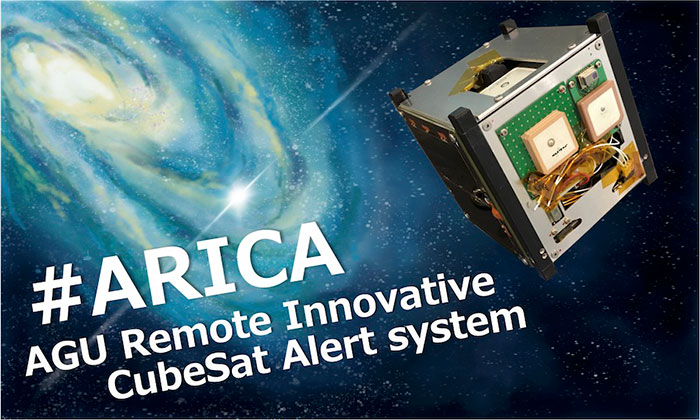
The ARICA Microsatellite
In addition to sending students to work with Professor YOSHIDA over at JAXA, we have utilized the Cooperative Graduate School Program to pursue multiple joint research projects with JAXA. ARICA is an ultra-small CubeSat measuring just 10 centimeters across, and it was selected as one of the theme of JAXA's "Second Innovative Satellite Technology Demonstration Program." On Tuesday, November 9, 2021, ARICA was launched into space onboard JAXA's Epsilon-5 small solid-fuel rocket.
CubeSats can be manufactured right here in the University, but we have very limited options when it comes to actually getting them into space. Once we established our general estimates for ARICA's manufacturing costs, we found ourselves lacking the necessary funds to launch it. Lucky for us, this was right around the time that JAXA opened up applications for the Second Innovative Satellite Technology Demonstration Program, so we applied and managed to get our satellite selected.
Everything for ARICA, from overall design the satellite and the electric boards, through to development of the controller of the satellite's power sources, sensor system, gamma-ray detector and communication system, was completed primarily by Aoyama Gakuin University students. Our selection for participation in JAXA's program meant that we could not allow any project deadline to go unmet, so the students gave it their all, carrying out thermal vacuum testing in April 2021 at the JAXA Institute of Space and Aeronautical Science, conducting vibration and shock tests in May and July at Kyushu Institute of Technology's facility, and delivering the finished satellite to JAXA rocket-operation center in mid-August.
Thanks to our students' hard work, we were able to send ARICA up into space. In addition, students primarily developed the software to visualize the satellite data in real-time, and also, operated ARICA after the launch.
The goal of ARICA is to demonstrate a technology to alert sudden gamma-ray bursts in space. We plan to install the same alert system on the Japanese proprietary gamma-ray-burst detection satellite HiZ-GUNDAM (High-z Gamma-ray bursts for Unraveling the Dark Ages Mission), which is one of the candidate missions for a JAXA competitive small-satellite program. If HiZ-GUNDAM is selected by JAXA, we will become more closely involved with them in our satellite building and operation efforts.

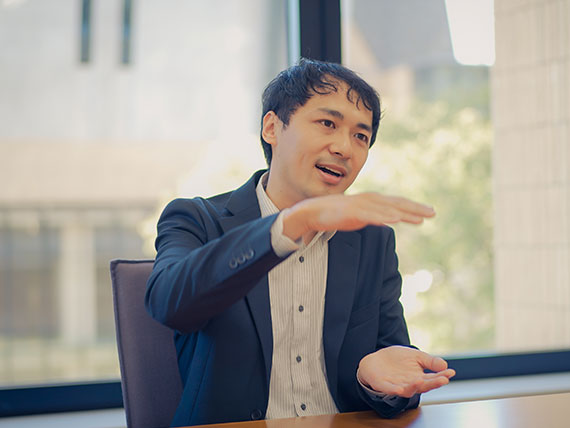
Shota Hasunuma
Associate Professor, Department of Mechanical Engineering, College of Science and Engineering
Shota Hasunuma studied mechanical engineering and completed a doctoral degree in engineering at The University of Tokyo School of Engineering. He worked in the Engineering Department at Subaru Corporation's Industrial Products Co., Ltd., and later as a visiting researcher and assistant professor in the Department of Mechanical Engineering at the Aoyama Gakuin University College of Science and Engineering, before attaining his current position as associate professor in the Department in 2020. He also serves as an instructor for the Beginner Course on Fatigue Design operated by The Society of Material Science, Japan (JSMS) Committee on Fatigue of Materials.

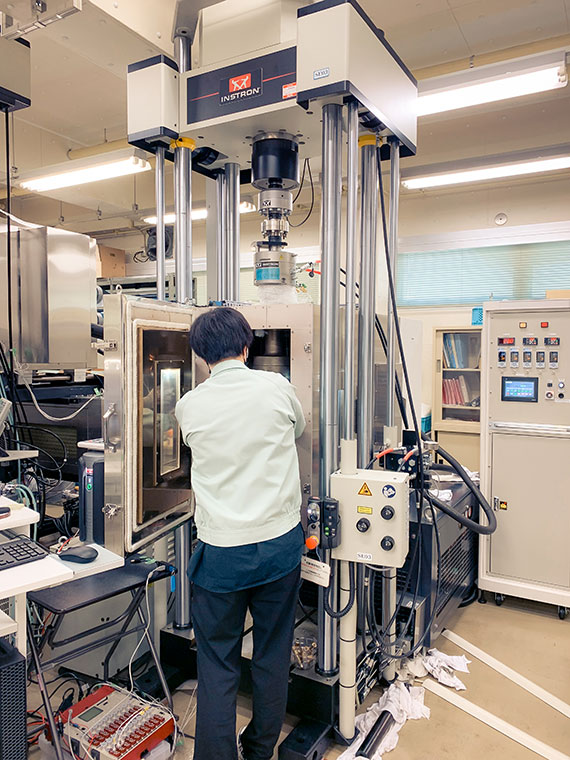
A range of different materials must be used when creating an aircraft or spacecraft fuselage, and advances in material technologies enable us to create lighter and stronger fuselages. However, our job isn't done once the original aircraft or spacecraft has been built as safe operation of that vehicle and its fuselage is required. I specialize in the science of material strength, which entails research into material strength as well as fracturing and deformation processes. Through my efforts, I have built up a range of knowledge on accident prevention for aircraft, spacecraft and various other machines.
My laboratory at Aoyama Gakuin University pursues research into material strength and fracturing, and for more than 20 years—including activities carried out by the lab's previous leader—we have participated in collaborative research endeavors together with Japan Aerospace Exploration Agency (JAXA) laboratories. The University's College of Science and Engineering was located on the Setagaya Campus previously before relocation to its current Sagamihara Campus location. The former location was near that of the National Aerospace Laboratory of Japan (NAL), which is now known as the Chofu Aerospace Center and was one of the original precursor organizations to today's JAXA. NAL's nearby location enabled researchers in both their organization and the College to form close interpersonal bonds and work in collaboration with one another.
Multiple laboratories within the College, including my Fracture and Strength of Materials Laboratory, had ties with NAL, and today we have similar connections with JAXA via the Cooperative Graduate School Program. Today, on the Sagamihara Campus, we are close to JAXA's Institute of Space and Aeronautical Science, which helps us pursue greater collaborations and exchanges with those researchers in addition to those at the Chofu Aerospace Center. In fact, JAXA researchers serve as part-time lecturers in graduate-school mechanical engineering course classes including "Advanced Course on Structural Materials in Space Engineering" and "Advanced Course on Aerospace Engineering."

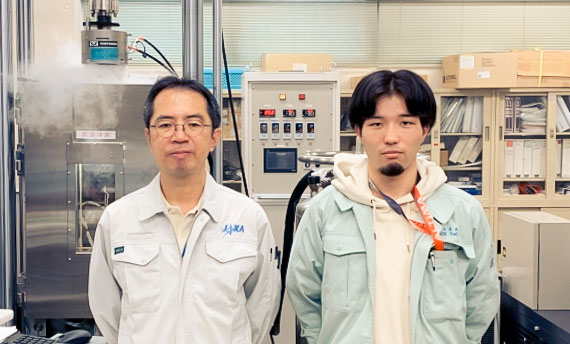
Four of our graduates students in the area of materials-related research take part in activities at JAXA research labs through the Cooperative Graduate School Program. Within the Fracture and Strength of Materials Laboratory, we collaborate with Professor Hisashi Kumazawa over at JAXA, whose research lab is pursuing basic research into use of carbon-fiber-reinforced plastics (CFRPs) in liquid hydrogen tanks.
Currently, passenger aircraft rely primarily on fossil fuels to operate, which has become a problem due to the negative environmental impacts of said fuel's CO2 emissions. In response, many are looking into the future potential of liquefied hydrogen as a fuel in next-generation aircraft. However, this fuel is more difficult to use than fossil fuel counterparts due to its low boiling point of –252.6 degrees Celsius. Professor Kumazawa's lab is researching material strength and other properties of CFRPs in low-temperature environments between –252.6 and –200.0 degrees.
This opportunity to participate in leading-edge space research inspires and motivates students greatly, and for me on a personal level it is a good chance to learn about a class of materials I don't normally work with, which helps me expand my knowledge.
Currently, I'm carrying out evaluations of properties for heat-insulating coatings used on jet-engine turbine blades, researching fatigue strength of welded sections in hybrid-rocket tanks, and pursuing other such research activities. Hybrid rockets have garnered widespread attention in recent years because they enable safer launches than standard-type rockets. By continuing with my research into fatigue strength properties, I hope to facilitate more practical applications for and launches of these hybrid rockets.

Related Research Laboratory
■Astrophysics Theory
○Theoretical Research in Astrophysics (Ryo Yamazaki Research Laboratory)
◆ Instant of black hole birth. gamma ray burst sources
◆ Investigation of high-energy cosmic rays and high-energy gamma rays in celestial bodies
◆ Experiment-based astrophysics: re-creation of cosmic phenomena on earth
■Astrophysics Theory Experiments
○High-energy Phenomenon and Gravitational Wave Astronomy (Takanori Sakamoto Research Laboratory)
◆ Exploration of celestial body responses to gravity-wave-source electromagnetic waves
◆ Observational research of high-energy bursts in space
○High-energy Astrophysics and Transient Astronomy Research (Yoshida Atsumasa Laboratory)
◆ Observational research of astronomical phenomena using artificial satellites and other equipment, and development of related observation equipment and devices
◆ Observation-based research on sudden astronomical phenomena in the x-ray and gamma-ray spectra
■Others
○Machine Control Research (Yoshiki Sugawara Research Laboratory)
◆ Robot dynamics and control
◆ Spacecraft dynamics and control
◆ Multibody dynamics
◆ Analysis and control of flexible structures
○Fracture and Strength of Materials Laboratory (Shota Hasunuma Research Laboratory)
◆ Strength evaluations for materials used in bicycles, motorcycles and power generation equipment
◆ Fatigue breakdown and crack propagation research
◆ Development of fracture simulation technologies
◆ Nano- and micro-scale material testing
○Jet Propulsion Lab (Kazuhiko Yokota Research Laboratory)
◆ Aerospace engine fluid mechanics
◆ Aerospace projectile fluid mechanics
◆ Micro-engine fluid mechanics
◆ Micro-projectile fluid mechanics
◆ Flow-induced vibrations and flow-coupled vibrations
○Experimental Mechanics Research Group (Satoru Yoneyama Research Laboratory)
◆ Elucidation of mechanical behaviors for viscoelastic materials
◆ Measurements of stress and distortion in light and image processing
◆ Elucidation of crack propagation, bending and other phenomena
◆ Measurements of actual bridges' structural-element forms and displacements
◆ Evaluation of fracture mechanic parameters, plastic zone sizes, etc.